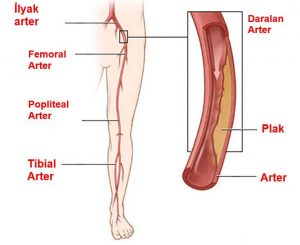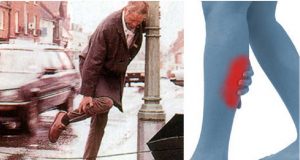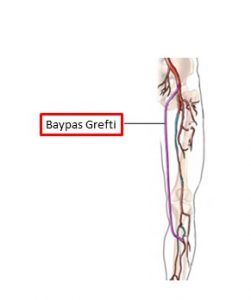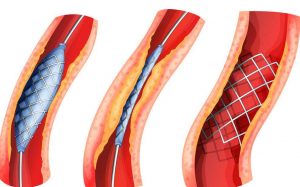
Leg vascular blockage, known medically as peripheral arterial disease (PAD), is a circulatory disorder. It occurs due to narrowing or blockage in the arteries that branch off from the aorta and carry oxygenated blood to the arms and legs. This disease particularly affects the lower extremity, namely the leg arteries.
Medically termed “peripheral arterial disease,” it is commonly referred to as “leg vascular blockage” among the general public. Both terms describe the same fundamental condition; however, PAD is more comprehensive and can rarely occur in the arms as well.
Who Is Affected?
- It is more common in men than in women.
- The risk increases in individuals over 50 years of age.
- Diseases such as diabetes, hypertension, and high cholesterol increase the risk.
- The most significant risk factor is smoking.
Most Common Symptom of Leg Vascular Blockage: Pain While Walking
The most characteristic symptom of the disease is pain in the calf or thigh area that occurs while walking. This condition is medically termed claudication.
During walking, the leg muscles cannot receive enough oxygenated blood, resulting in cramp-like pain. The pain subsides when the patient rests for a short while; it resumes when they continue walking. This cycle causes patients to pause frequently.
For this reason, the disease is also colloquially known as “window shopper’s disease.”
Does the Blockage Resolve on Its Own?
No. Vascular blockage tends to progress over time. However, in some cases, the body attempts to provide limited blood flow to the affected area by developing new capillaries called collateral circulation. Muscle tissue can also partially adapt to this low blood flow. However, these mechanisms alone are not sufficient.
How Is It Diagnosed?
Diagnosis is usually made through physical examination and some imaging methods. Commonly used diagnostic methods include:
- Ankle-brachial index (ABI) measurement
- Doppler ultrasonography
- CT or MR angiography
- Classic angiography (when necessary)
The inability to detect a pulse in the foot or a weak pulse prompts the doctor to conduct further tests.
When Is Treatment Necessary?
Claudication can be a warning signal. There is a high possibility of blockages in the coronary arteries supplying the heart or the carotid arteries supplying the brain in the same patient.
Treatment becomes mandatory if:
- Walking distance is progressively shortening
- Rest pain has begun
- Wounds have started to appear on the foot
Current Treatment Methods for Leg Vascular Blockage
1. Lifestyle Changes
- Smoking must be quit. If smoking continues, no treatment method can be successful.
- Blood pressure, cholesterol, and diabetes should be controlled.
- Healthy eating and maintaining an ideal weight are important.
2. Exercise Programs
Walking for at least 30 minutes, 3-5 days a week is recommended. Exercises both encourage collateral vessel development and alleviate symptoms.
3. Medication
- Blood thinners (aspirin, clopidogrel, etc.)
- Special medications that increase walking distance
Should be prescribed by a doctor in personalized doses.
4. Interventional Treatments
The blocked artery can be opened using stent or balloon angioplasty methods. It is performed under local anesthesia by entering through the groin artery. It is not suitable for every case and may have limited long-term success rates.
5. Surgical Treatment (Bypass Surgery)
If the blockage is in a long segment or if interventional methods do not yield sufficient results, bypassing the artery through an alternative route may be necessary. It is usually performed when there is a serious nutritional disorder, tissue death, or risk of limb loss.
Conclusion
Leg vascular blockage is not just a problem limited to walking pain. It is an important indicator of the body’s overall vascular health. Therefore, early diagnosis and application of appropriate treatment methods are of great importance. If symptoms such as pain, difficulty walking, or non-healing wounds on the feet are present, a cardiovascular surgeon should be consulted without delay.



